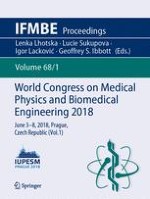2019 | OriginalPaper | Buchkapitel
Estimating Cardiac Intensive Care Patients’ Responsiveness to Late Conservative Fluid Management Using Systems Analysis
verfasst von : Katharina Bergmoser, Sonja Langthaler, Alexander Lassnig, Martin Horn, Christian Baumgartner
Erschienen in: World Congress on Medical Physics and Biomedical Engineering 2018
Verlag: Springer Nature Singapore
Aktivieren Sie unsere intelligente Suche, um passende Fachinhalte oder Patente zu finden.
Wählen Sie Textabschnitte aus um mit Künstlicher Intelligenz passenden Patente zu finden. powered by
Markieren Sie Textabschnitte, um KI-gestützt weitere passende Inhalte zu finden. powered by
